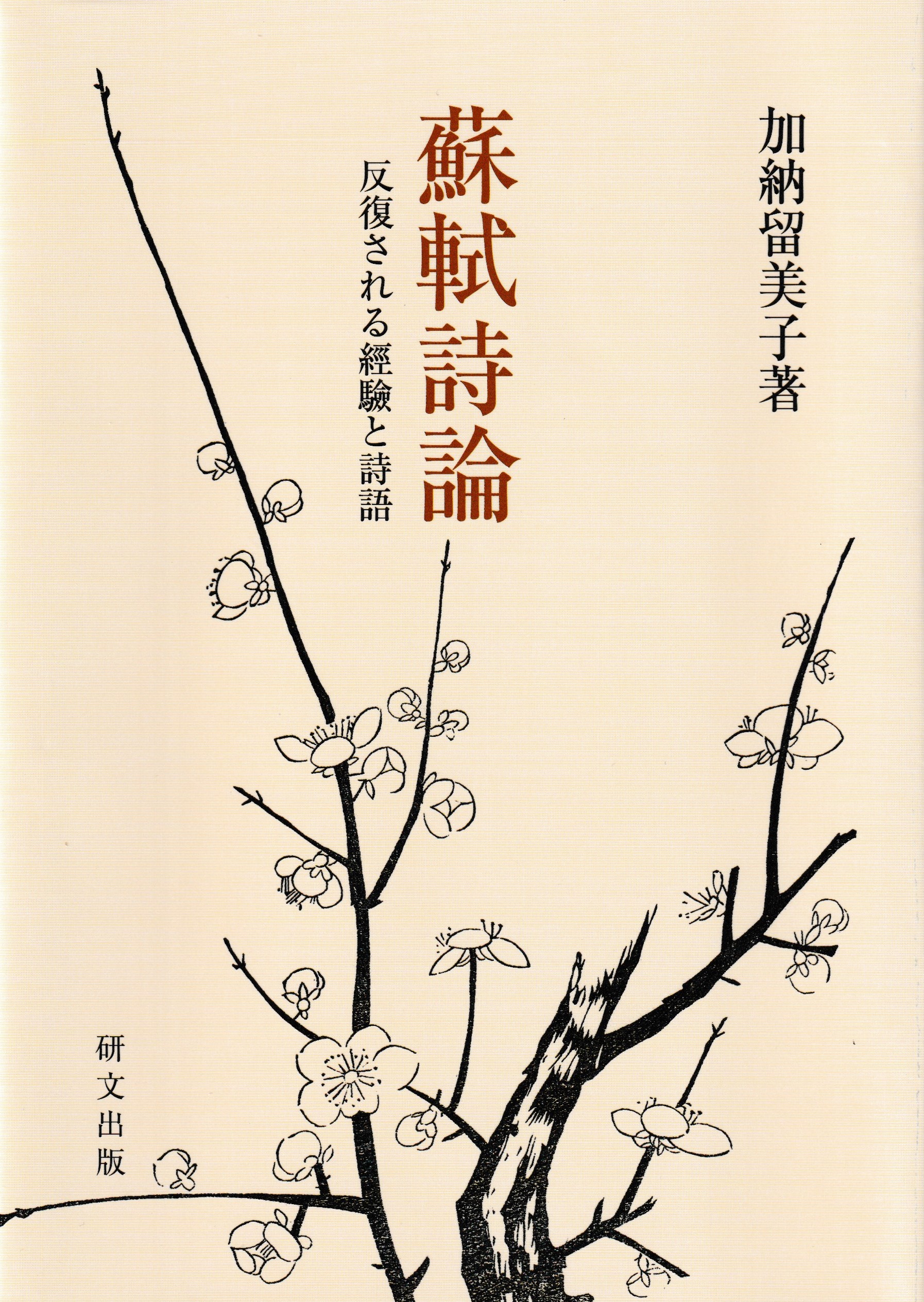
Title
Soshoku Shi-ron (A Study of Su Shi’s Poems - Repeated Experiences and Poetic Diction)
Size
340 pages, A5 format, hardcover
Language
Japanese
Released
October, 2022
ISBN
978-4-87636-472-5
Published by
Kenbun Shuppan
Book Info
See Book Availability at Library
Japanese Page
This book deals with Su Shi (1037–1101), a scholar-official of the Northern Song period in China, and it focuses on a distinctive repetitiveness to be seen in his poems—namely, the act of utilizing the expressions, ideas, and structure of his own earlier poems when writing a new poem—and examines the aims of such compositions.
During his career as an official for more than forty years, Su Shi twice had the experience of (1) encountering political conflict in the imperial court, (2) holding various posts in the provinces so as to avoid political strife, (3) being demoted and exiled for political crimes, and (4) redeeming his honour. Interestingly, as if it were linked to his career, he repeatedly used the technique of utilizing the expressions and structure of earlier poems when writing new poems. As concrete examples, I here wish to quote two lines each from two poems.
去年今日關山路
細雨梅花正斷魂
Last year, on this day, I was on the road to the mountain barrier station [on Mt. Chunfeng].
In the drizzling rain I saw a plum blossom, and it truly tore my soul asunder.
(On the 20th day of the first month, when going to Qiting, three locals—Pan, Gu, and Guo—saw me off at Dongchanzhuangyuan in Nüwangcheng)
春風嶺上淮南村
昔年梅花曾斷魂
On top of Mt. Chunfeng, a village in Huainan—
When I once saw a plum blossom, it tore my soul asunder.
(On the 26th day of the eleventh month, below Songfengting when the plum blossoms were in full bloom)
The first poem was composed during Su Shi’s first exile and the second poem was composed during his second exile. Not only do they share a high degree of similarity in their wording, but they also use the same rhyme. But there was in fact an interval of almost fifteen years between the two poems. Judging from this deliberate repetitiveness, it is evident that Su Shi was a person with an exceptional memory that enabled him to transcend the gap in time and draw forth a particular poem from his past œuvre and that he possessed a natural talent to make free use of it in his writing. This is why he is today considered (according to the Chinese scholar Wang Shuizhao) to be representative of the supreme achievements of Northern Song literature.
There are almost no examples in pre-Song works that use this technique displayed by Su Shi, namely, that of quoting one’s own earlier poems when writing a new poem in the same way that writers draw on expressions used by previous writers, nor had there ever existed a writer who had practised this technique as thoroughly as Su Shi. However, on no account did he do so in order to satisfy his pride as a high-ranking official and intellectual, and I would note that it was a necessary strategy due to his having had a tumultuous career as an official and was informed with hopes for the effect that using his own past poems to compose new poems would have. In other words, it can be pointed out that its distinctive significance lay in its quite personal felicitous role, namely, that of describing his current circumstances in positive terms while quoting his own poems written under similar circumstances in the past and thereby pinning his hopes on a favourable turn of events in the future.
In this book the links to be found between individual poems are referred to as Su Shi’s “self-reference,” and the nature of this varied “self-reference” is examined in six chapters on the basis of concrete examples. In these chapters I discuss mainly poems written during the twenty-five years from his tenure as governor of Xuzhou in 1077, which became the starting point of his “self-reference,” until his death in 1101 while travelling north from the island of Hainan, where he had been sent in exile. In chapter 6, I focus on a new mode of expression and style that Su Shi essayed in circumstances when “self-reference” became difficult. For the actual contents of each chapter, reference may be made to the table of contents.
The academic and social significance of this book lies in the fact that it presents a fresh perspective for the study of Su Shi’s writings, regarding which there can still not be said to have been an adequate accumulation of research in Japan, and it also clarifies the fact that it is in his “self-reference,” a technique for utilizing the expressions and structure of his own earlier poems when writing new poems, that his essence as a poet lies.
There are a considerable number of examples of “self-reference” in Su Shi’s poems that display an uncommon fixation when writing a new poem by modelling the time and place of its composition on a previous poem. If one explores the group of poems created by deliberately imposing certain constraints such as these, one can discover in their depths Su Shi’s own lifelong answers to the essential questions about poetry—why do people write poems and what can one achieve by writing a poem? It could be said that the significance and academic value of this book also lie in the fact that, while focusing on the single person of Su Shi, by exploring the world of his poetry it also gets to the heart of some universal issues in classical Chinese literature.
(Written by: KANO Rumiko / April 17, 2023)
Related Info
The 3rd UTokyo Jiritsu Award for Early Career Academics (The University of Tokyo 2022)
https://www.u-tokyo.ac.jp/ja/research/systems-data/n03_kankojosei.html



